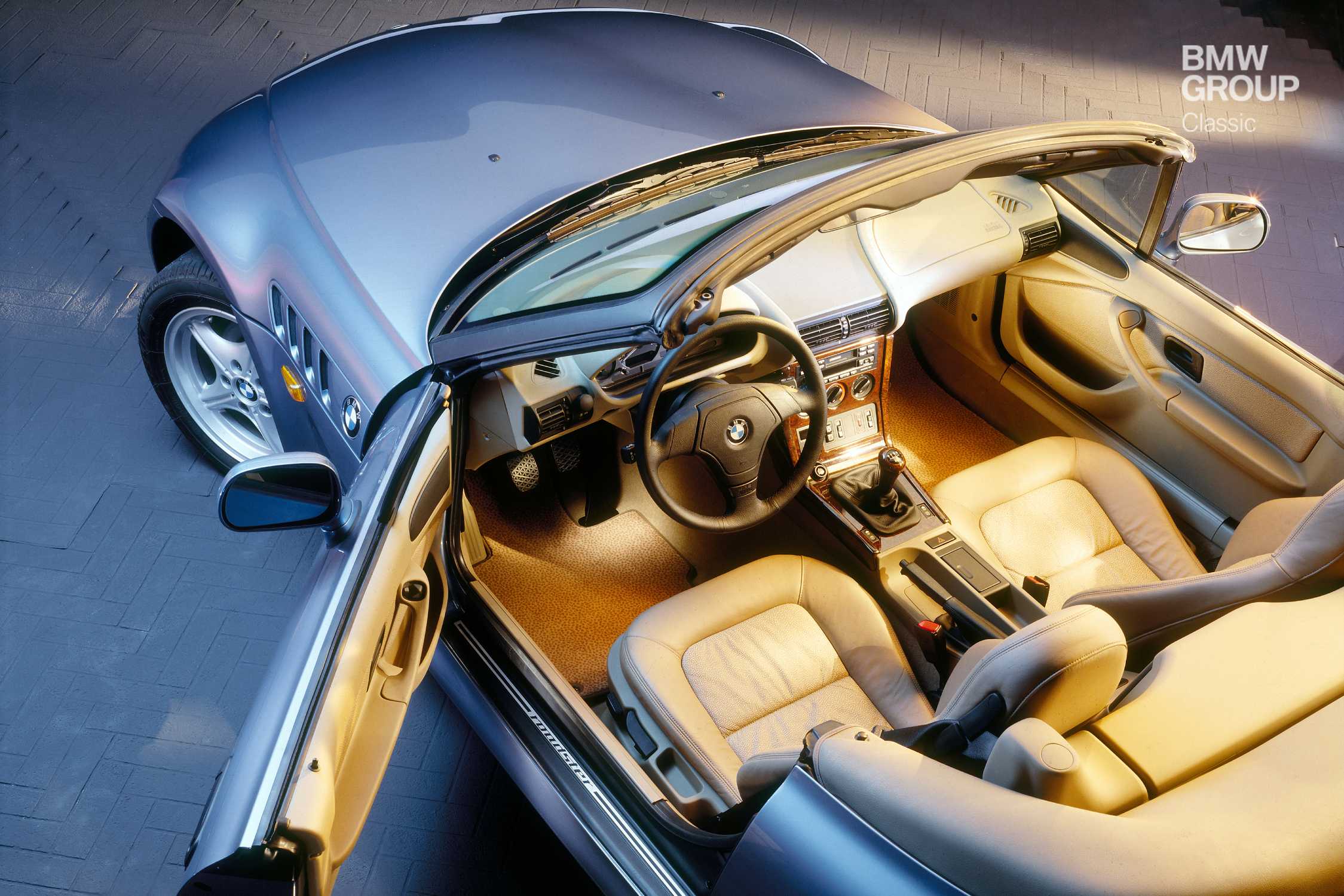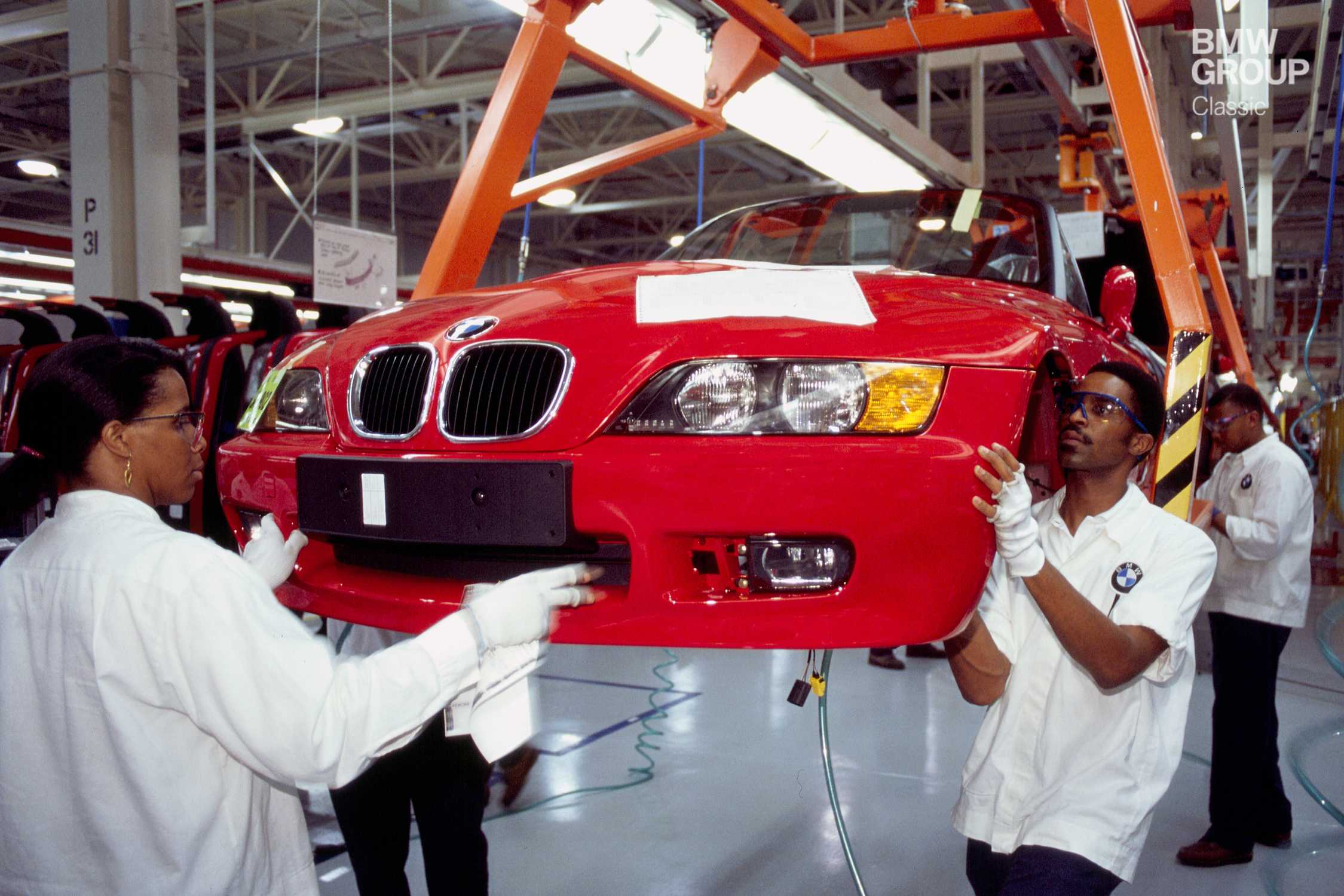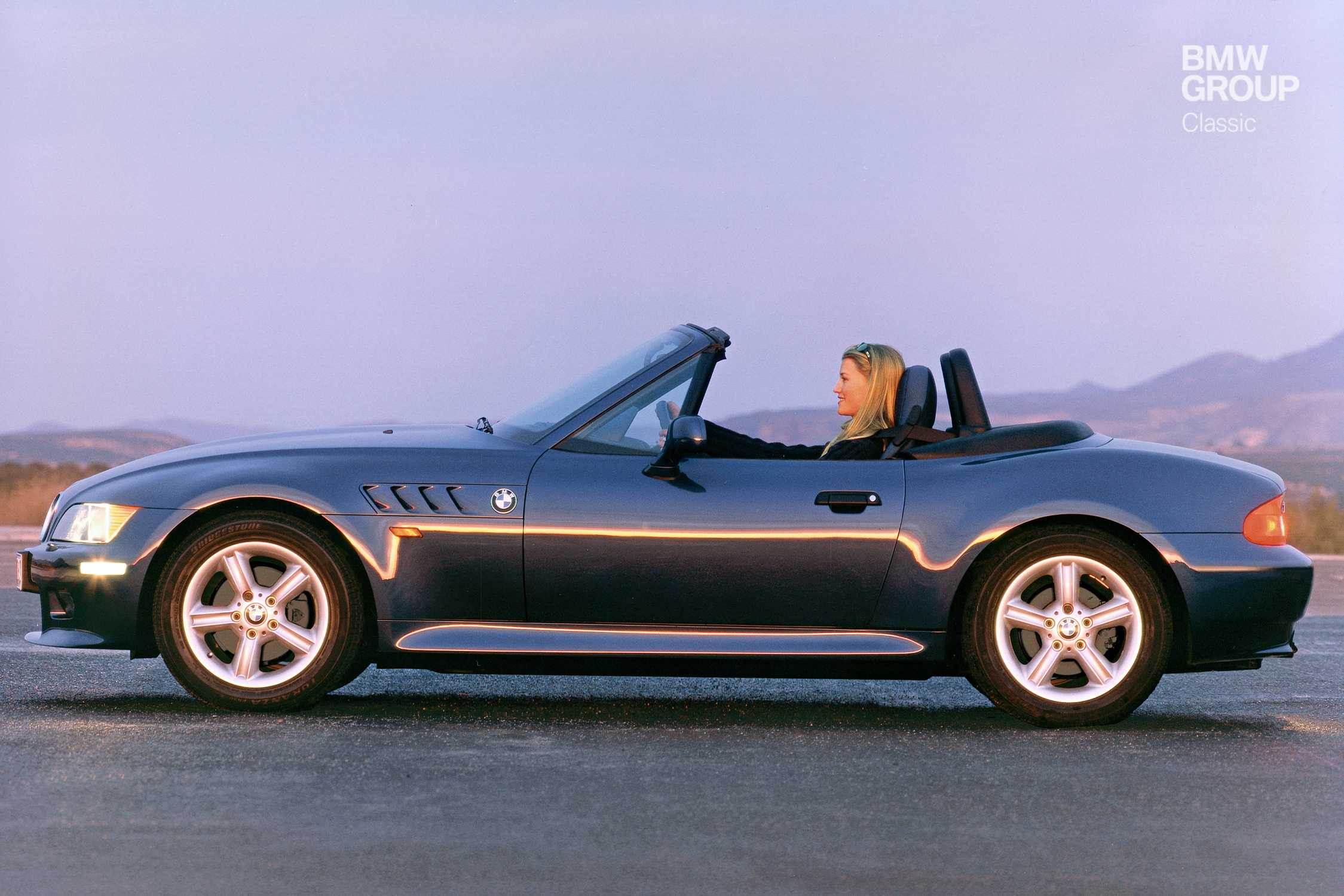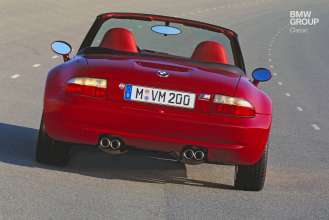Why is it that a roadster and being in love occupy the same chunk of head space? Perhaps because a roadster only has room for one passenger to join the driver, the sun smiles in through the space vacated by the soft-top and the wind remodels your hair-do. It’s carefree stuff. Hitting the road is all that matters, not where it leads; corners are your friend, the joy of the present replaces the slavery of schedules. No other species of car puts driving – the pleasure of the journey – so resoundingly at the heart of what it seeks to do. A roadster, then, is a place where indulgence trumps necessity.
The BMW Z3 Roadster got its first moment in the sun back in 1995 – and what could be sunnier than a starring role in the latest Bond film GoldenEye. The Z3 Roadster emerged into an automotive world busy rekindling its love for an age-old flame – the small, open-top two-seater. These are cars of such close quarters that kids and a family, trips to the tip and adventures in DIY have to wait for another day. Such cars are about pleasure, and pleasure alone.
A little help from over the pond.
The Z3 Roadster was built across the Atlantic, at BMW Plant Spartanburg. Given the sales potential offered by the huge US car market, it seemed a logical decision to produce the Z3 there from scratch. The technical underpinnings for the new car were sourced from a well-known and extremely well-loved sibling: the E36 3 Series. The BMW 3 Series Compact – a shortened version of the E36 (with a large tailgate) making its debut in the line-up – formed the backbone of the Z3.
First up on the engine front was the company’s tried-and-tested four-cylinder unit, initially producing 115 hp from 1.8-litre displacement or 140 hp from 1.9 litres. That was sufficient to take the slender roadster from 0 to 100 km/h in around 10 seconds (1.9 l: 9.5 s), which was rapid enough. Top speed was 195 or 205 km/h. Unsurprisingly, a six-cylinder engine soon joined the fray. The powerful statement provided by its 2.8 litres and 193 hp was furnished with extra visual clout by audaciously flared wheel arches.
Tight and twisty mountain routes, coastal roads and quick runs to the café would all be on the Z3 Roadster’s favourites list. And it never demands any special attention – think of it as more reliable mate than flighty diva. Plus, it is refreshingly easy to maintain (that’ll be those 3 Series underpinnings).
The star turn of the Z3 range was, of course, the fabled M Roadster, introduced in 1997. Its 321 hp was enough to see off most other things on the road, allowing them a flash of its imposing tailpipes before they vanished into the distance. Today, the M Roadster remains a captivating sports car of undisputed cult appeal.
Growing gains.
1998 saw the arrival of the BMW Z3 Coupe, a very different character and one not offered with a four-cylinder engine. It never scaled the sales heights of the soft-top Z3, and its fan club was a more specialised affair. But from the outset it was a style icon, a cult model with its own fraternity of enthusiasts. And prices of used examples are heading skywards accordingly.
With 297,000 examples built, the final Z3 rolled off the production line in 2002 – to be replaced by the Z4. Now that’s what you call a history of success.
The here and now.
A glance at the relevant online marketplaces is revealing, to say the least. While other examples of 1990s motordom have long since dropped off the radar entirely, Z3s still feature en massse. Many are spared the rigours of winter use, although the coldest season has little to scare it – especially if the optional hardtop was specified. However, roadsters are often second cars, looked after and driven by people who know what they’re doing and kept by their original owners for a long time – as a present to themselves, a touch of escapism from everyday life.
A used Z3 Roadster therefore represents a sound bet. They are still in good supply and prices remain reasonable; ownership can begin at around the 3,000 euro mark. Spend double that and you’ll be getting your hands on a very fine example.
Parts are generally not a problem and things only really get more expensive if you plump for something that was never at the cheaper end of the price lists in the first place – an M Roadster, say.
The sound you can hear is somebody in the know, somewhere in the world, handing over their money. So don’t come running to us down the line, saying you didn’t realise now was the time to buy. We told you so!
Information:
BMW Z3 (E36/7) 1995 – 2002
Four- and six-cylinder engines, from 115 to 231 hp, top speed: 196 km/h – 250 km/h
Coupé 1998 – 2002
Six-cylinder engines only, from 193 to 325 hp, top speed: 231 – 250 km/h
M Roadster 1997 – 2002: 321 and 325 hp, top speed: 250 km/h
M Coupe 1998 – 2002: 321 and 325 hp, top speed: 250 km/h



